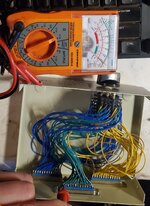I still am unaware of the risks involved, so in the spirit of ingorance and negligance I will continue to guinea pig this switch. I do have a cpl battery bombed boards and a hot air rework station... Call me stupid but I can't see this destroying my mobos or devices. Being as they do the 'exact same thing' internally, I don't see the difference. I also do not run an HDD of any kind in my Macs, I feel I'd be more weary if I was using an old SCSI HDD. However if I show up complaining that it's ruining my devices then I don't expect any sympathy!! lol
The list of risks for this is on page 42 of my book. You’ll have to order it to find out.

Seriously though, I agree with what others say (not to use it), mostly because I wouldn’t take that risk myself either.
But at the end of the day, it’s yours and being told it could cause issues, it’s your own decision to make. Reliability could to beyond ruining something and instead cools involve system instability or data corruption.
Similarly to how using an inferior scsi cable, or bad (poor quality) terminator, could cause issues and data loss. Questions I would think about are whether the switch changes any electrical values (resistance, etc) as they pass through it. SCSI is very sensitive to slight changes.
Back in the day, some problems were solved by not using that generic SCSI cable and instead using a good quality more expensive one, or not using the $10 terminator and instead using the $60 Granite Digital active terminator.
Do you have a way to measure the lines going through the switch box to ensure nothing is interfering with it from end to end? To be honest I don’t know what tools you’d use or what you’d be looking for specifically, but I’m sure there’s a way to verify nothing is happening with the switch in the line.


